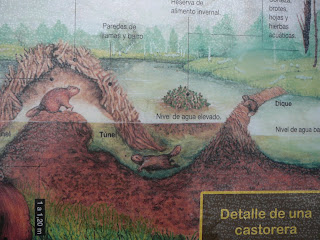
The National Day of Memory for Truth and Justice marks the day in 1976 when a military coup led by General Jorge Rafael Videla took over the democratically elected government of Isabel Perón (Perón's wife after Evita), starting the Guerra Sucia, or Dirty War.
Over the 7 years of the dictatorship, an estimated 30,000 people were "disappeared," a chilling euphemism for "tortured and killed." This was all part of the even more Orwellian-sounding "National Reorganization Process."
The Madres de Plaza de Mayo and the Abuelas de Plaza de Mayo are the two primary groups seeking out information about the missing people. The madres (mothers) began by standing in the Plaza de Mayo every week, waiting in a very public and brave way to get information about their "disappeared" children. They wore white kerchiefs on their heads; this is now the symbol of the movement.
See white kerchief on the dark banner, at right
The abuelas (grandmothers) work to reunite the roughly 500 illegally adopted orphans of the Dirty War with their families. These orphans, now our age, never even knew they were adopted. The people they have always thought were their parents may actually have been complicit in their real parents' deaths. It's hard to imagine what it would be like to find this out. Most orphans, we're told, choose to go back to their biological families, even if they've never known them at all.
The two groups organized a major march today along with speakers and singers. Argentina's president Cristina Fernández de Kirchner (who is definitely worth her own blog post) spoke as well.
Taking over Buenos Aires' biggest streets

"30,000 reasons not to pay the foreign debt"

Che and the Subte
We arrived at the Plaza de Mayo and it was so full we couldn't even see where the stages were, much less get close to them, but the action in the streets was more interesting anyway.
Marching tunes

Street theater

"For the right to abortion [that is] legal, safe, and free" As in almost everywhere else in Latin America, abortion is not legal in Argentina. According to the country's health minister, 80,000 women are hospitalized each year due to complications from clandestine abortions.

A few things we noticed, some in contrast to San Francisco (also a place accustomed to frequent marches and demonstrations):
There were really no police to speak of; the atmosphere was militant, though upbeat; there were a lot of young people; many of the people marching seemed to have darker skin and hair than the people we see on a daily basis in the center of the city; there were quite a few anarchists; there were lots and lots and lots of socialist groups (indistinguishable to us based on their various acronyms); and of course, as you'll see from the photos (especially the last one), there were some distinctly Argentinian touches.

Lots of big explosions and smoky flares, some releasing a lot of pink smoke. It is hard to imagine this happening in San Francisco without people getting alarmed and police clearing the streets. Here only the pigeons seemed to mind.

Very Argentine snacks: Quilmes (the national beer) and meat sticks of some sort

Where there is socialism, there is capitalism; a dexterous beer vendor weaves rapidly through the crowd

Enjoying a pedestrianized Avenida de Mayo on the walk back to our apartment

No march would be complete without mate




































